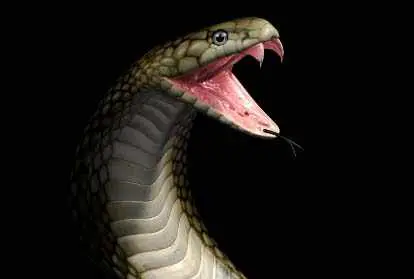The Top 5 Countries with the Most Deaths by Snakebite
| Country | Number of Deaths by Snakebite | Death Rate (per 100,000) |
|
|---|---|---|---|
| 1 | India | 15,000 - 50,000 | 1.28 |
| 2 | Indonesia | 11,581 | 5.00 |
| 3 | Nigeria | 9,900 | 14.0 |
| 4 | Pakistan | 8,264 | 5.04 |
| 5 | Bangladesh | 8,000 | 5.04 |
 Special Report
Special Report
What you'll learn in this report:
Poisonous Snakes: Essential to the Ecosystem but Deadly
Snakebites cause considerable morbidity and mortality worldwide. Recent estimates, which are frustratingly fragmentary, suggest that worldwide, venomous snakes cause either “5.4 million bites, about 2.5 million envenomings and over 125,000 deaths annually”, “more than 3 million bites per year resulting in more than 150,000 deaths”, or “several million bites and envenomings annually with tens of thousands of deaths”. Whatever the exact numbers are, suffice to say that snakes kill a lot of people.
The highest burden of deaths exists in South Asia with India being number one on our top 5 list, next is Southeast Asia, and then sub-Saharan Africa. Envenoming resulting from snakebites is an important public health problem in many tropical and subtropical countries. Research estimates that at least 421,000 envenomings and 20,000 global deaths occur each year in these areas due to snakebite. High estimates of these figures may be as high as 1,841,000 envenomings and 94,000 deaths. Envenoming occurs in about one in every four snakebites, with between 1.2 million and 5.5 million snakebites occurring annually. According to the IUCN Red List of Threatened Species, there are at least 97 venomous snakes at risk of extinction, officially classified as "endangered". (a.)
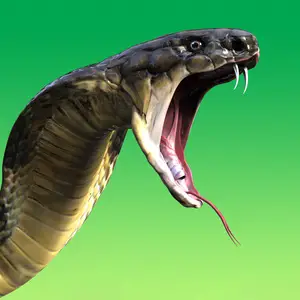
The Most Poisonous of Poisonous Snakes
Of the 3,000 or so snake species that exist in the world, about 600 are venomous. Venomous snakes - which exist on every continent except Antarctica — immobilize their prey by injecting modified saliva (venom) that contains toxins into their prey's tissues through their fangs which are specialized, hollow teeth designed to kill you. Regarding humans, snakes mostly use their venom for self defense and not really to eat you. They will bite the unlucky person who threatens, startles, provokes, or accidentally encounters them. Sometimes it's not that snakes actually want to bite you, it's more like you accidentally stepped on him, intentionally prodded him or otherwise prevented him from going about his day.
Other times, especially in poor rural areas of countries like India, a snake like the Black Krait will sneak in and bite you while you're sleeping. That's not your fault. Snakes are complicated. Probably the most venomous of all the venomous snakes is the inland or western Taipan which is found in Australia, which incidentally, didn't make out top 5 list of the unlucky countries above. A Taipan's venom is so strong just one teeny drop of it's devil saliva can potentially kill up to a hundred adults. If a Taipan bites you, get yourself to a emergency room...fast. The good news is that most people recover from a bite after receiving medical care, as any kind of antivenom is pretty much an essential thing to have in an Australian hospital. (A.) (B.)
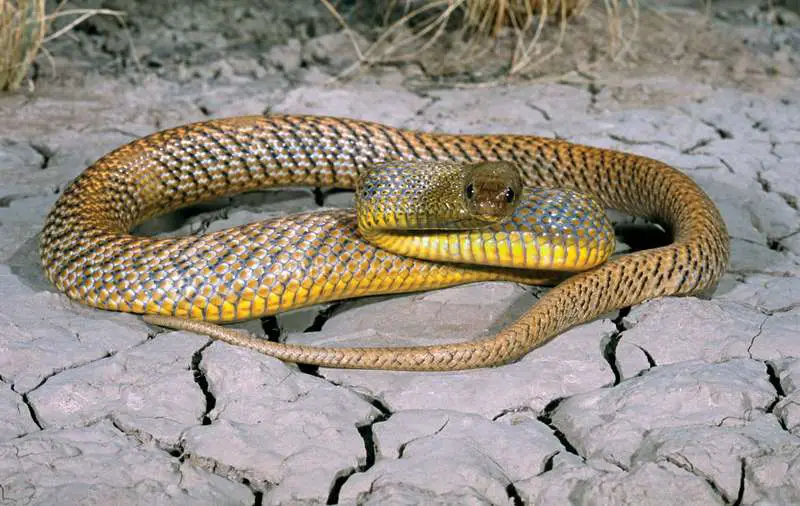
You Really, Really Don't Want to Get Bitten by a Snake
The potentially fatal effects of being “envenomed” (having venom deliberately injected into you) by these snakes include, among other things: widespread and uncontrollable bleeding, muscle paralysis, and massive tissue destruction (necrosis) around the bite site. Bites from these snakes can also cause permanent disability. For example, snakebite victims, who tend to be young and male (see above about messing with snakes), often have to have a limb amputated because of necrosis setting in. Let's just say that being young and male and being around poisonous snakes doesn't always lead to good outcomes.
The best treatment for any snakebite is to get the victim to a hospital as soon as possible where antivenoms, which are mixtures of antibodies that neutralize venom, can be given. Snake venom can be extremely toxic to the human body causing a variety of effects on the victim. Snake venom can cause a person to bleed to death rather quickly, can cause paralysis of the diaphragm and stop a person's breathing, can cause necrosis around the bite which can lead to loss of a limb or disfigurement, and finally it can also cause complete kidney failure; so please try to avoid venomous snakes as much as possible. (A.)
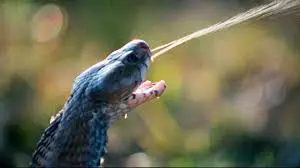
The Global Burden of Snakebite
The Global Burden of Snakebite reports estimates that, worldwide, at least 421,000 envenomings and 20,000 deaths from snakebite occur every year; the actual numbers, they suggest, could be as high as 1.8 million envenomings and 94,000 deaths. Their estimates also indicate that the highest burden of snakebite envenomings and death occurs in South and Southeast Asia and in sub-Saharan Africa, and that India is the country with the highest annual number of envenomings (81,000) and deaths (between 20 and 50,000).
Where do Snake Bites Occur the Most?
In the Global Burden of Snakebite report's most conservative estimate, the highest number of envenomings were estimated for South Asia (121,000) followed by Southeast Asia (111,000), and East Sub-Saharan Africa (43,000). The lowest numbers were estimated for Central Europe and Central Asia. The report estimates that, globally, at least 421,000 envenomings occur annually; this figure may be as high as 1,8 million. According to conservative estimates by country, which were used to calculate the regional estimates, India was the country with the most envenomings at 81,000 per year. Sri Lanka (33,000), Viet Nam (30,000), Brazil (30,000), Mexico (28,000), and Nepal (20,000) were the other countries that had a high estimated number of envenomings annually. Vipers are the family of snakes that bite the most.
Who Gets Bitten?
Most victims of snakebites are either children or people who work outside, especially in farming, construction and agriculture in general. Children often suffer more severe effects from a snakebite than adults, due to their smaller body mass. Unfortunately, like always, it's the poorer countries that suffer the most bites and deaths and generally have worse outcomes, as health systems are in developing countries are weakest and medical resources sparse. The key to treating snakebites is anti-venom. Unfortunately only a few developed countries have capacity to produce snake venoms of adequate quality for antivenom manufacture.
Other factors include the ability of a developing country to collect quality statistical data, and another important factor being cultural factors that influence treatment-seeking behaviour with many victims in poor, developing countries opting for traditional practices from healers, shamans, etc, rather than seeking hospital care. Most deaths in rural India for example, take place at home without prior attention by any qualified healthcare worker, so most causes are not medically certified. This is more common in rural areas where people spend more time outdoors and are more likely to under-report bites. In situations where statistical data on snakebite envenoming is poor, it is difficult to accurately determine the need for antivenoms.
This leads to a vicious circle of under-estimation of antivenom needs by national health authorities driving down demand for manufacturers to produce antivenom products. No reporting, no reliable data, very little antivenom produced, the price of antivenom increases. It's easy to see the problem, but no so easy to fix it. According to the WHO, unless strong and decisive action is taken immediately in terms of reporting and manufacturing, antivenom supply failure is imminent in Africa and in some countries in Asia.(D.) (E.).
The Deadliest American Snake
The Eastern Diamondback Rattlesnake is easily the deadliest snake in the United States and are usually found in Florida, North Carolina, southern Mississippi and eastern Louisiana. Most snakebites in the United States occur in summer, after rainstorms and near suburban areas. A analytical study of the American Association of Poison Control Centers showed that 98% of all snakebites, with the exception of Hawaii, come from bites from rattlesnakes, copperheads, and cottonmouths which belong to the viperid family of snakes.
Most snakebite victims in the U.S. were overwhelmingly male at 77% and 12% were male children. 53% of all people bitten in the U.S. were admitted to hospital.
The Diamondback Rattlesnake is identified by the diamond pattern on it's back, so if you encounter a snake like that, keep your distance. Remember my snakebites are caused by accidentally encountering them or by not-so-accidentally messing with them. The Diamondback is so tough it will try to kill you even after you have cut off it's head! Respect and awareness are the key factors when it comes to not getting bitten by a Diamondback Rattlesnake. (F.).
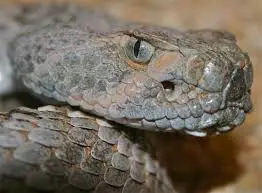
Snakebites in India
There are an astonishing 1,300 to 50,000 annual deaths from snakebites per year in India. Snakebite remains an underestimated cause of accidental death in modern- rural India as 97% of snakebites in India occurred in these rural, agricultural areas. Males in India are almost 60% more likely to get bitten by a snake than females at 41%. The average age of a snakebite victim in India is between 15 and 29 years old. The most likely time of year to be bitten is during the monsoon months of June to September. Annual snakebite deaths were greatest in the states of Uttar Pradesh (8,700 deaths), Andhra Pradesh (5,200 deaths), and Bihar (4,500 deaths).
India is inhabited by more than 60 species of venomous snakes some of which are almost everywhere and can often cause severe envenoming. Some of the snakes found in India that do a lot of the biting are as follows: The Spectacled cobra (Naja naja), The Common Krait (Bungarus caeruleus), The Saw-scaled Viper (Echis carinatus), Russell's Viper (Daboia russelii), The Central Asian Cobra (Naja oxiana), The Monocellate Cobra (N. kaouthia), The Greater Black Krait (B. niger), Wall's and Sind Kraits (B. walli and B. sindanus) and finally the pleasant sounding Hump-nosed Pit-viper (Hypnale hypnale).
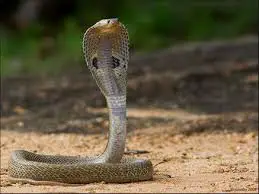
The main problem in India is the under-reporting of snakebites. Many patients are treated and die outside health facilities, especially in rural areas of the country. A lot of victims in rural India are bitten while they sleep. Kraits, like the The Greater Black Krait, are particularly fond of doing that. An unlucky person who is bitten in their sleep by a Black Krait can look forward to developing severe abdominal pain, descending paralysis, respiratory failure and convulsions. The snake then slithers away and that particular death might not be associated with snakebite at all and thus, never gets reported.
The 13 states in India with the highest snakebite mortality are inhabited by the four most common deadly venomous snakes: The Spectacled Cobra,The Common Krait, The Saw-scaled Viper and Russell's Viper. The relative risk of dying from snakebite in India versus another cause was greater at ages 5–14 years so children are more at risk of dying by snakebite in India than any other age group. Children like to play outdoors, are curious, and have less experience with identifying dangerous animals. (E.).
The Trouble with Snake Bite Statistics
Few reliable incidence data are available from the rural tropics where snakebites occur most commonly; reliable data are mostly limited to a few developed countries where bites are rare. Thus, the true global incidence of snakebite envenoming, its impact, and characteristics in different regions remain largely unknown. Under-reporting is a serious problem for health care systems in developing countries when it comes to snakebites. (a.)
What to Do if You're Bitten
This is where we get very serious. Snakebites often occur between the months of April and October when temperatures are warmer. If you are bitten by a snake, even if you think it is not poisonous, call an ambulance or go to the ER right away and have the bite checked. Apply as much pressure to the wound as you can by winding a bandage or cloth/ fabric tightly around your limb or injury. If you are with someone, have them do this as you should stay as still as possible.
Most of all Don't panic. Staying still will prevent the venom from travelling around your body through the lymphatic system (not your bloodstream like people think). Do not apply a tourniquet or suck on the wound. That's the kind of stuff you see on TV that doesn't work in real life and only makes things worse. The good news is that if you are bitten by a snake in the United States, the statistics are on your side. Between 7,000 and 8,000 people are bitten by snakes in the U.S. each year while there are only 5 to 6 deaths. This is due to the excellent quality of medical care in the United States and the amount of anti-venom available. Remember that most snakes would rather avoid a human than bite them. If you live in an area with dangerous snakes, they are probably trying their best to avoid you and you should let them. (c.)
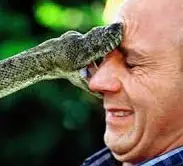
The Benefits of Snakes
Despite all that you read above, relax. Snakes are not only really beautiful animals but also very beneficial creatures and are essential to ecosystems around the world. We know you are probably afraid of them but consider this: snakes eat a lot of pests such as rats. Why is that a good thing for humans you ask? Check out this link: "Why Rats Should Probably be Eaten by Snakes."
Snakes also provide food for other predators who like to eat them. You know, that whole circle of life thing. So the next time you see a snake, don't poke him or prod him or hit him with a stick, instead thank him or her for their beneficial existence on our planet. Word to the wise though; do it from a safe distance. Unless he's in your house. Then call animal control.

Noel James Riggs,
Owner and Head Writer, Top 5 of Anything.com.
Contact me at: njrtop5ofanything@gmail.com
Top 5 facts sources:
- Kasturiratne A, Wickremasinghe AR, de Silva N, Gunawardena NK, Pathmeswaran A, et al. (2008) The Global Burden of Snakebite: A Literature Analysis and Modelling Based on Regional Estimates of Envenoming and Deaths. PLoS Med 5(11): e218. doi:10.1371/journal.pmed.0050218
- University of Adelaide: " “ Clinical Toxicology Resources"
- Queensland Health: " “Top 5 things you need to do if you get bitten by a snake."
- WHO Fact Sheet (2019): "Snakebite envenoming."
- Bijayeeni Mohapatra,David A. Warrell,Wilson Suraweera,Prakash Bhatia,Neeraj Dhingra,Raju M. Jotkar,Peter S. Rodriguez,Kaushik Mishra,Romulus Whitaker,Prabhat Jha. (2011): "Snakebite Mortality in India: A Nationally Representative Mortality Survey."
- American Association of Poison Control Centers. (2001 - 2005) AAPCC database characterization of native U.S. venomous snake exposures, 2001–2005
Sources:
1. Anuradhani Kasturiratne, A. Rajitha Wickremasinghe, Nilanthi de Silva, N. Kithsiri Gunawardena, Arunasalam Pathmeswaran, Ranjan Premaratna, Lorenzo Savioli, David G Lalloo, H. Janaka de Silva. (2008). The Global Burden of Snakebite: A Literature Analysis and Modelling Based on Regional Estimates of Envenoming and Deaths.
2. Bijayeeni Mohapatra,David A. Warrell,Wilson Suraweera,Prakash Bhatia,Neeraj Dhingra,Raju M. Jotkar,Peter S. Rodriguez,Kaushik Mishra,Romulus Whitaker,Prabhat Jha. (2011): "Snakebite Mortality in India: A Nationally Representative Mortality Survey."
List Notes: Data is for the years 2005-2008, which is the latest data available as of December 2020. Please note: deaths and death rates are estimates. Death rate by is by venomous snake or reptile per 100,000 population. To obtain this data, the researchers systematically searched scientific literature for publications on snakebites and deaths from snakebites and extracted data on snakebite deaths in individual countries from the World Health Organization (WHO) mortality database. They also contacted Ministries of Health, National Poison Centers, and snakebite experts for unpublished information (“grey” literature) on snakebites. Together, these three approaches provided data on the number of snakebite envenomings and deaths for 135 and 162 countries, respectively.
